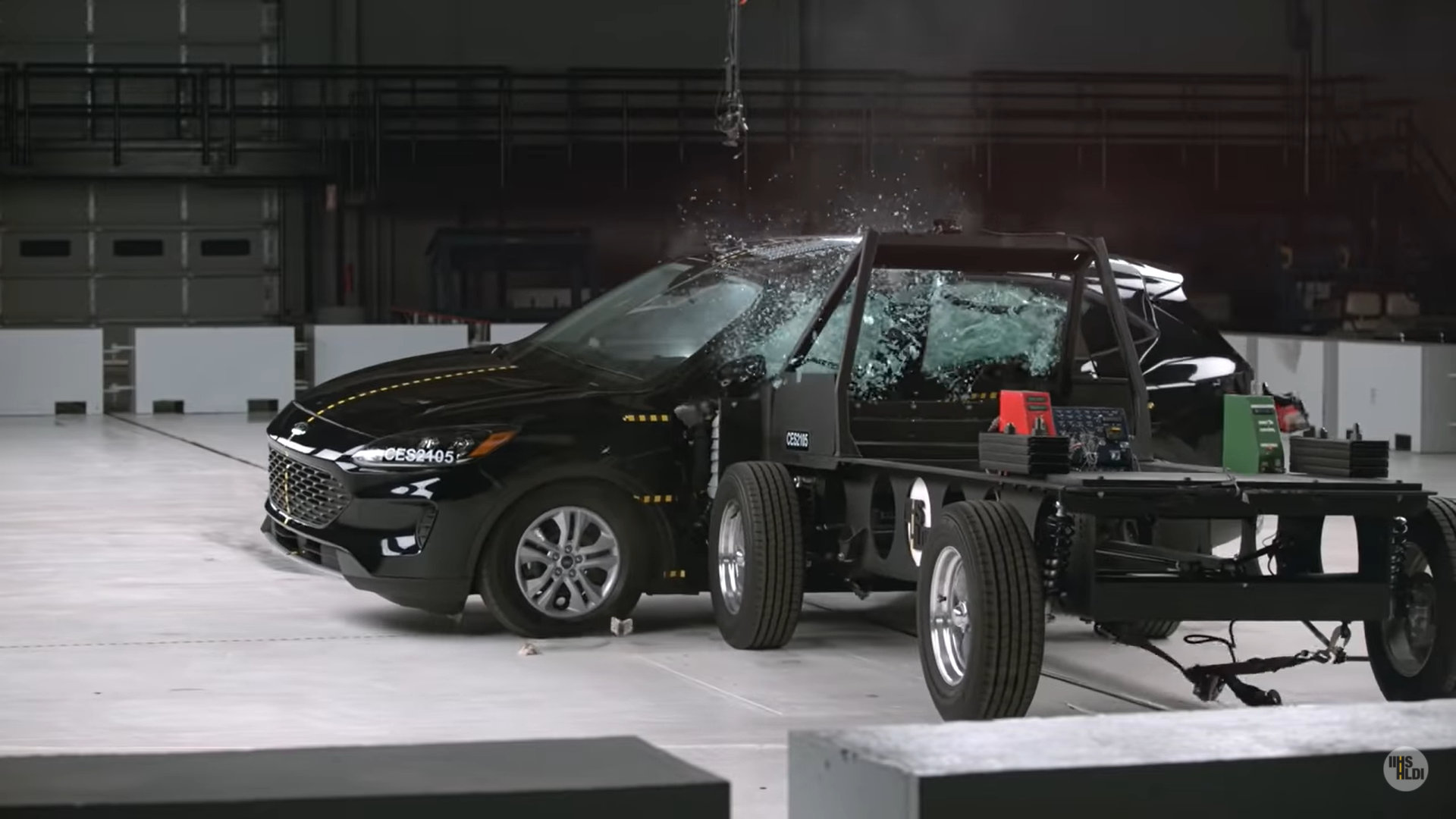The US Insurance Institute for Highway Safety (IIHS) has introduced a tougher side crash test to address higher-speed crashes that cause fatalities, with the first tests of 2020-21 vehicles revealing only one of 20 small SUVs – the 2021 Mazda CX-5 – earned a good rating.
The IIHS said nine vehicles earned acceptable ratings: the Audi Q3, Buick Encore, Chevrolet Trax, Honda CR-V, Nissan Rogue, Subaru Forester, Toyota RAV4, Toyota Venza and Volvo XC40. The Chevrolet Equinox, Ford Escape, GMC Terrain, Hyundai Tucson, Jeep Compass, Jeep Renegade, Kia Sportage, and Lincoln Corsair earned marginal ratings, while the Honda HR-V and Mitsubishi Eclipse Cross received poor ratings.
All but one of the tested vehicles was a 2021 model. Mitsubishi skipped the 2021 model year for Eclipse Cross, so the 2020 model was tested. With the exception of Compass and Tucson, the ratings carry over to 2022 models.
“We developed this new test because we suspected there was room for more progress, and these results confirm that,” said David Harkey, President of the IIHS. “The good rating for the CX-5 shows that robust protection in a more severe side crash is achievable.”
IIHS Senior Research Engineer Becky Mueller’s research formed the foundation for the new test protocol.
“Obviously, these results aren’t great, but they’re in line with what we expected when we adopted this more stringent test,” she said.
According to the institute, the ratings highlight a wide range of scores among vehicles that performed better in an earlier version of the side test, with all 20 small SUVs earning good ratings in the first-generation side evaluation.
The updated side test uses a heavier barrier traveling at a higher speed to simulate the striking vehicle. The new barrier weighs 1900 kilograms – close to the weight of today’s mid-size SUVs – and strikes the test vehicle at 60 km/h, compared with a 1500 kilogram barrier travelling at 50 km/h in the original evaluation. Together, the two changes result in 82 per cent more crash energy that needs to be dissipated.
The honeycomb striking surface of the new barrier also has a different design that acts more like a real SUV or pickup when it hits another vehicle.
Like the original test, the updated side rating is based on how well the occupant compartment structure holds its shape during the crash, injury measures collected from dummies positioned in the driver seat and the rear seat behind the driver, as well as a supplemental measure of how well the airbags protect the heads of the two dummies. The SID-IIs dummy used in both seating positions represents a small woman or 12-year-old child.
The IIHS said the new test reveals wide discrepancies in the degree of protection these small SUVs provide for the pelvis and the chest. Only five vehicles earned good or acceptable scores across the board for these injuries.
According to the institute, a likely explanation is that the new striking barrier bends around the B-pillar between the driver and rear passenger doors. Mueller observed the same tendency by the fronts of SUVs and pickups during vehicle-to-vehicle research tests. As a result of this behaviour, depressions are formed in the front and rear doors of the struck vehicle and the occupant space can be compromised even if the B-pillar can withstand the higher-speed impact. To adapt, IIHS said manufacturers will probably need to strengthen the horizontal door beams to reduce that intrusion and adjust their torso- and pelvis-protecting airbags to provide more coverage and cushioning.
In real-world side crashes, stronger structures are linked to higher survival rates. While all 20 small SUVs received good scores for their structures in the original test, only eight earned good ratings for structural integrity in the new, higher-energy evaluation. The B-pillar of the worst performer by this metric, the Honda HR-V, began to tear away from the frame, allowing the side of the vehicle to crush inward almost to the centre of the driver seat.
The IIHS said vehicles earning marginal or poor overall ratings in the new test generally struggled with structural issues, and high chest and pelvis injury measurements from both dummies. For example, the HR-V’s weak B-pillar contributed to elevated dummy injury measures. Similarly, a combination of structural weakness and inadequate seat-mounted torso-protecting airbags made the Mitsubishi Eclipse Cross the only vehicle to earn a poor rating for driver chest protection.
The Chevrolet Equinox and its twin, the Terrain, were exceptions among the poor and marginal performers. The institute said the tested vehicle, the Equinox, demonstrated a strong structure but only managed a marginal rating overall due to inadequate head protection and elevated head injury risk for the rear passenger, along with elevated chest injury measures for the driver.
Rather than similar flaws, the IIHS said there were many different reasons why the nine acceptable-rated vehicles fell short of a good rating – a marginal driver chest injury for the Buick Encore, inadequate head-protecting airbags for the Nissan Rogue, heightened injury measures for the driver’s pelvis for the Toyota RAV4, and so on.
“There’s no single reason why so many side crashes still result in fatalities, but these results provide a roadmap for specific improvements that can save lives,” Mueller said.

